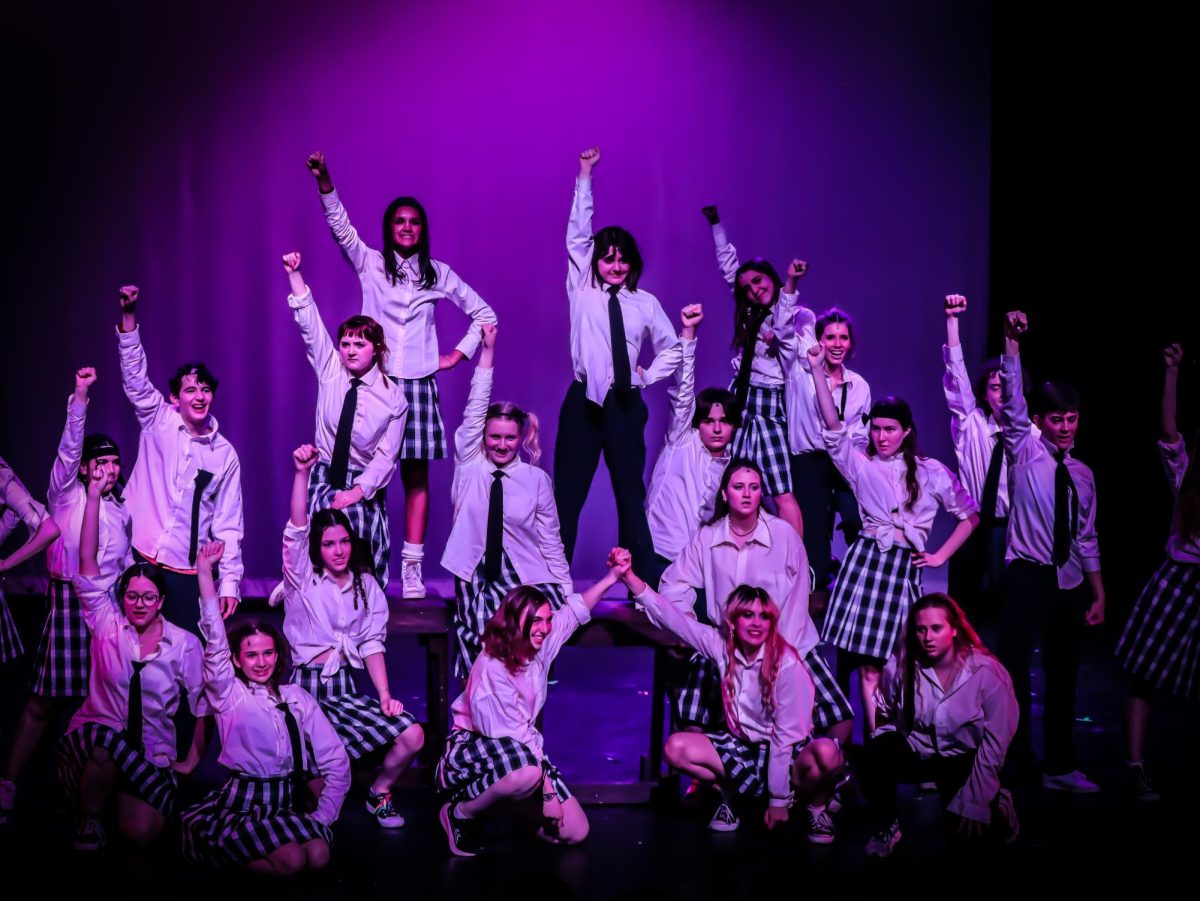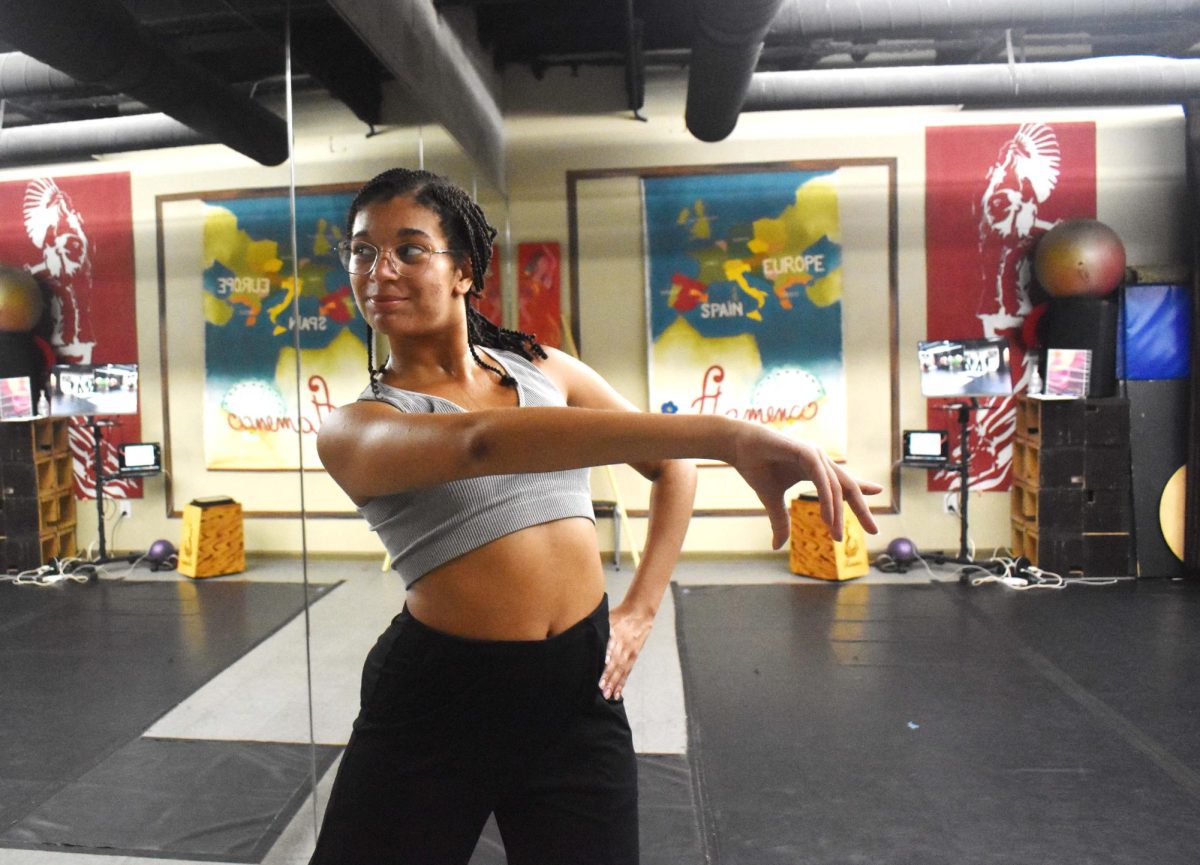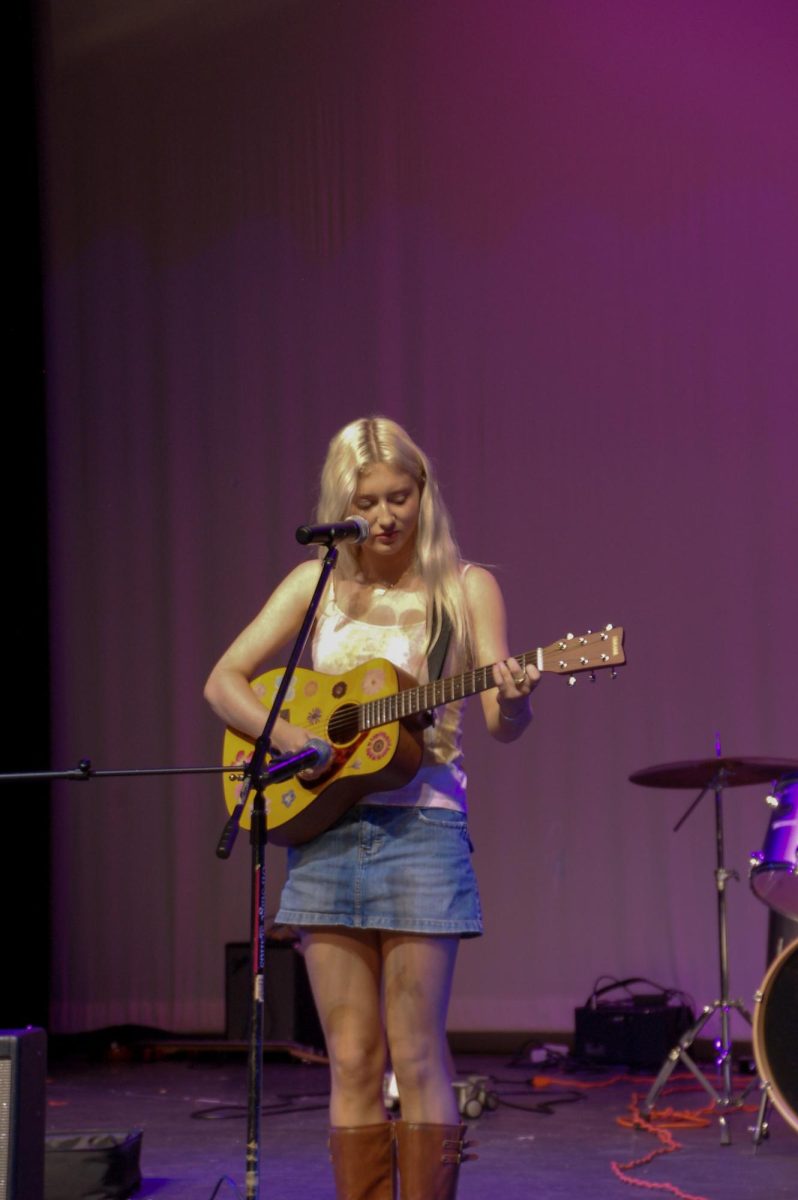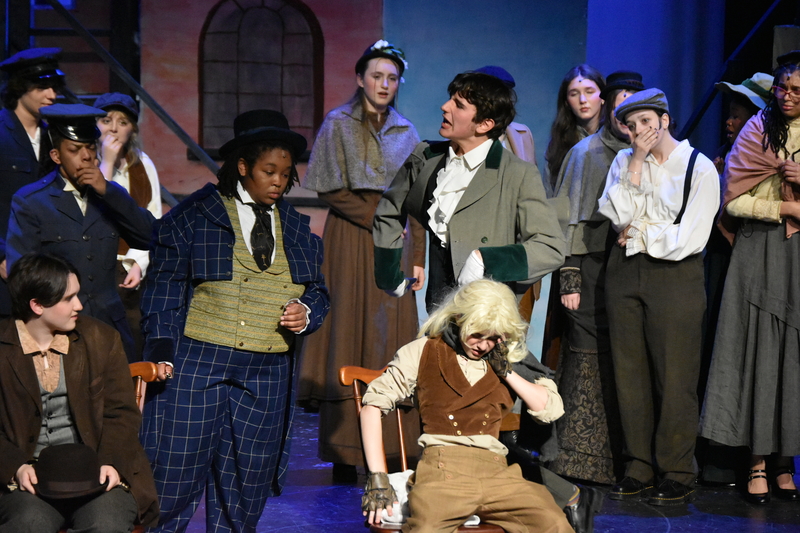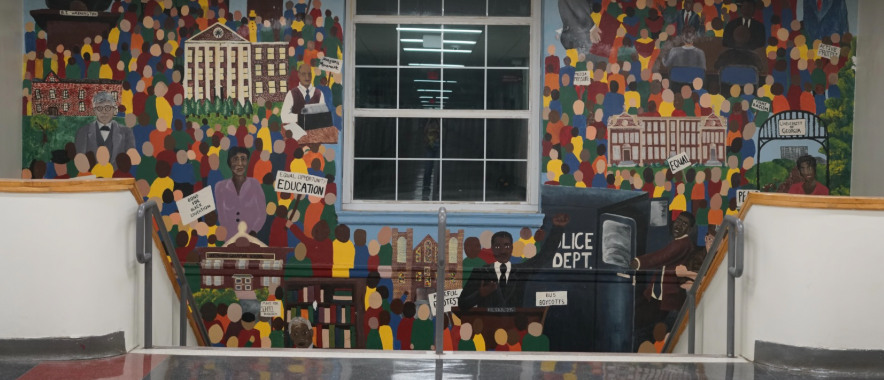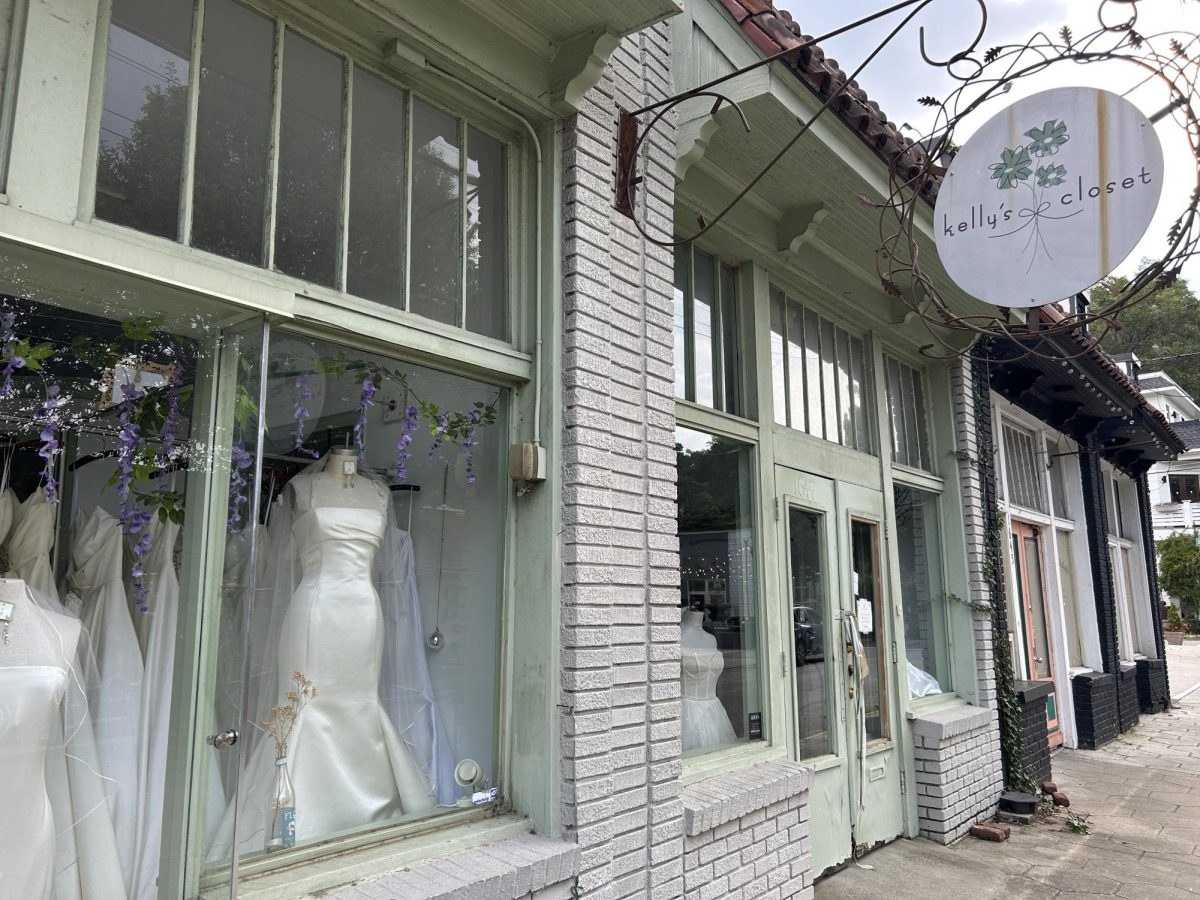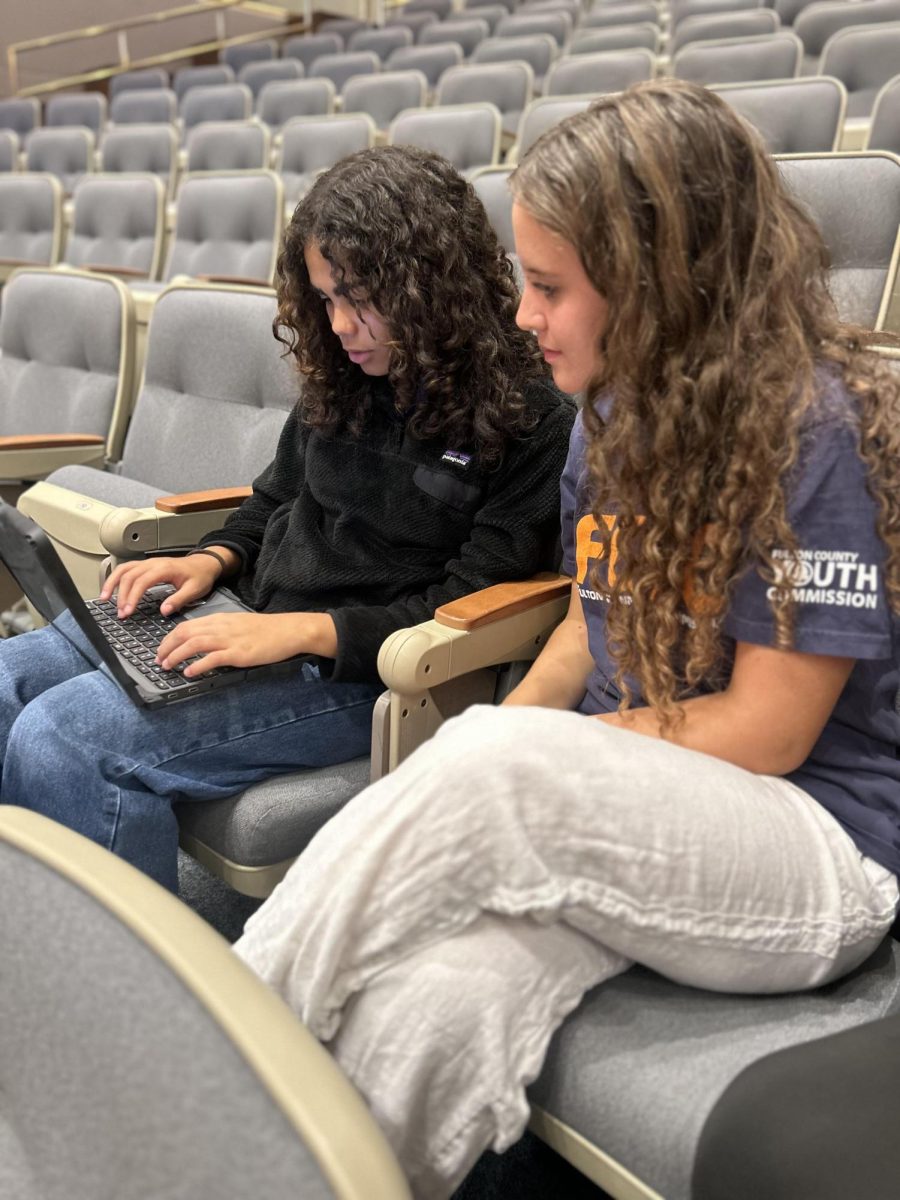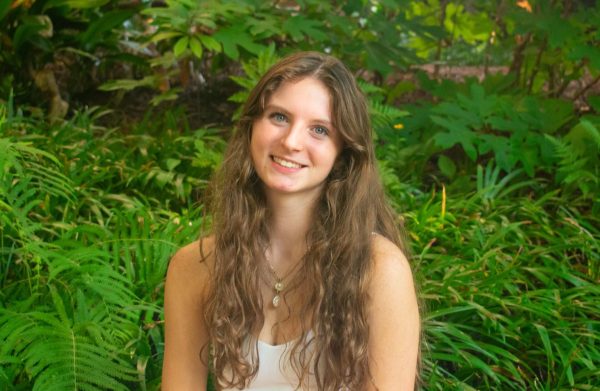When watching a story unfold on stage, most overlook what goes on behind the curtain. Over 50 students, all part of the cast and crew of the theater department, worked to bring the production of Matilda to the stage.
Junior Lizzie Lyman, who played the lead role in “Matilda,” Midtown theater’s most recent show, described how she approached “becoming” Matilda.
“Preparing for the role of Matilda wasn’t as hard as some other roles I’ve played because Matilda is so similar to me as a child,” Lyman said. “I tried to emulate the way I acted as a young girl, and I think blending that with Matilda’s unique quirks made for a really special interpretation.”
Matilda goes from being an underestimated child to a confident girl who can stand up for herself, similar to Lyman’s story. Lyman said the musical’s themes resonated with her, especially Matilda’s use of knowledge as a way to find power.
“I have always felt very connected to the themes of ‘Matilda,’ even before I started the show,” Lyman said. “I have a strong internal sense of justice, which makes it hard for me to stand by when unfair things are happening. I also think that the idea of intelligence being Matilda’s route to freedom is a powerful message that translates to our society.”
Sophomore Samaya Agarwal, who played Matilda’s best friend Lavender, said the team was racing against the clock to pull everything together in time. Though it was difficult to trust the process, she said that in the end, it was all worth it.
“At first, we were very behind in our rehearsal schedule, and I thought we wouldn’t finish,” Agarwal said. “There’s so much choreography, music and blocking in the show, but we never had enough rehearsal time. On opening night, seeing the show come fully together in front of an audience was so relieving, and I think gave everybody a lot more confidence, as well. It was wonderful and so nice to see all our hard work pay off.”
Senior Donovan Doyle, who played Bruce, said there were challenges that came with taking inspiration from such a powerful movie and Broadway musical.
“We had the choreographers, tech designers and builders to make anything happen, but what we quickly realized is that our big plans needed to be consolidated as the sheer size of the show was revealed,” Doyle said. “Every single scene includes a full cast number with special effects and overlapping noise cues, and it took a lot of work to get where we are today with the show.”
Midtown’s adaptation of “Matilda” from screen to stage required adjustments to fit the production’s resources and scale.
“There are quite a few differences between the stage and screen versions of ‘Matilda,’” Lyman said. “The plot in the musical focuses more on Ms. Honey and Matilda, while the movie focuses almost solely on Matilda. The Broadway version has a lot of interesting special effects, but those can be hard to replicate at a high-school scale. Because of this, we had to find ways to make things work within our budget and skill level.”
Lyman said the teamwork of the cast and crew was an important part of overcoming these challenges.
“The cast and crew have been incredible throughout the show,” Lyman said. “You can see teamwork in action when the crew is doing difficult scene changes in just a few seconds.”
Offstage, the lighting team worked to match the show’s energy and emotion. Senior and lighting designer Kate Berg explained her creative process.
“The main vision for lighting design for ‘Matilda’ was to ensure the lighting depicted the magic and mystery of the show,” Berg said. “We used lots of contrasting vibrant colors to help portray the divide between the evil Ms. Trunchbull and the magical Matilda.”
Berg described the complicated lighting process as paying attention to small details, as well as conducting research on past productions.
“We work with the director by listening in on notes to actors and watching scenes run multiple times before recording lights,” Berg said. “This is to ensure that the mood the director wants is conveyed properly. We also reference past productions of Matilda, watching videos and looking at photos to get inspiration for the lights.”
Berg emphasized how specific songs heavily relied on lighting in order to allow the audience to feel the emotions being conveyed through the acting.
“I think the lighting plays a large role in songs like ‘Chokey Chant’ and ‘Quiet,’” Berg said. “This is because the lights help to show the audience the fear during ‘Chokey Chant’ and the chaos during ‘Quiet.’”
Lyman emphasized the importance of these elements during one of Matilda’s most defining moments.
“I think a crucial part of the story is my song ‘Quiet,’” Lyman said. “During that song, Matilda is essentially having a panic attack, which builds up until she suddenly focuses the energy into telekinesis. It was important to me that I did a good job representing what a panic attack can look and feel like, and the dancers and lights helped with that vision.”
The emotional depth of “Matilda” is shown through the songs, as well as the production. Doyle said the musical aspect amplified the storytelling and allowed for a deeper connection with the audience.
“I love musical theater because I think that songs add a depth of emotion to a story that just can’t be expressed otherwise,” Doyle said. “My teacher once said that a character starts to sing when they are so full of emotion that they can’t express it through words anymore, and I think that’s exactly right.”
Outside of the technical and musical aspects of the production, Lyman said the energy of seeing a live theatre performance is unmatched, with the mistakes being unintentionally memorable.
“There really is nothing like live theatre,” Lyman said. “There are mistakes, delays and missing pieces, but the way that people adapt in the moment to keep the show going is what makes it so fun to watch.”

